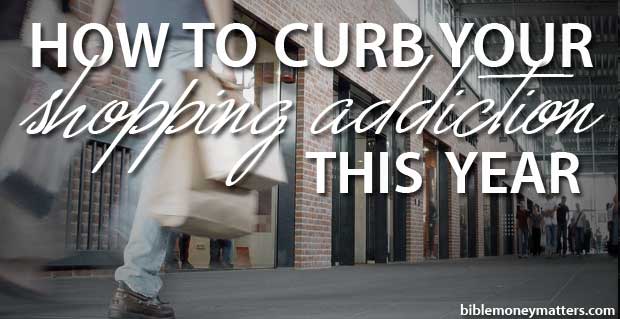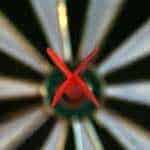Now that you’ve had time to settle into routine for this year, it’s probably time to check in with your spending. Have you stayed on track? Have you stuck to goals?
Though the holidays are synonymous with overspending, the following months can actually be even more telling of your relationship with spending. Without the holidays to blame for extra purchasing, you might notice that you still have that irresistible urge to swipe your card for the newest gadget or outfit.
If you’re noticing a bit of a slip in your saving, there’s no better time than now to acknowledge and begin adjusting the habits that could be causing you to give in to your shopping addiction. First step? Understanding where you should focus your energy and attention. When you’re mindful of your spending habits and cognizant of the impact they have on your overall budget, you’ll give yourself the perspective necessary to make any adjustments needed!
Quick Navigation
Pinpoint Your “Thing”
One of the dangers of saying that you’d like to “stop spending” or “spend less” is that you give yourself a very general challenge. In order to effectively focus on a goal, you have to take it one step further and ask “spend less on what”? In most instances, it’s not simply about decreasing your overall spending, it’s about spending less in a specific area or on specific items.
For example, my spending temptation is food. Luckily for me, groceries are a non-negotiable part of the budget. But it’s still fairly easy to get in trouble when I go for the fancy extras and restaurant expenses. Since I know I’m more likely to overspend on food than anything else, I factor in an extra gut-check whenever I’m about to make an unexpected, food related purchase. After pinpointing my spending “thing,” I felt like the task of spending less was much more manageable.
Identify Your Spending Trigger
Along with knowing your spending “thing” it’s also incredibly important to understand your spending “trigger.” Why is this important? When you know what prompts you to spend, you know where to focus your plan of action. It’s information that will help you to take on a strategic approach to the problem rather than a well-intentioned but aimless approach.
Your trigger doesn’t have to be something tangible – in fact, it’s often not. It can range from stress to smelling something delicious to feeling competitive with your friends. But once you’ve assessed your spending trigger you’ve leveled yourself with your temptation and won’t be surprised when faced with the challenge.
Set Flexible Boundaries
When you set hard-lines for your spending, you risk the possibility of feeling deprived. That’s why it’s essential that you give yourself some leeway when setting your spending boundaries. This spending flexibility, of course, comes with some stipulations. You shouldn’t use it as a way to explain away a purchase or make excuses for buying something that you already know you don’t need. Instead, setting flexible boundaries means that if you stretch beyond your boundary, you plan to bounce back and reset your goals rather than shatter them entirely.
React & Redirect When Overwhelmed
Imagine you’re driving down the road and you see an obstacle in your way. What’s your first impulse? You have a gut instinct to react and redirect your path in order to avoid the danger. This is a powerful scenario that can also help you to manage your spending obstacles. When you find yourself feeling out of control, take a breath and choose to react. Ultimately, you are the one in the driver’s seat and you alone hold the power to resist the splurges and the excess purchases.
Create Your Exit Strategy
The fact of the matter is, at some point you will be tempted and you will find yourself in a difficult to resist situations. With consumerism as an everyday reality of life, coming up against these challenges is just a way of life. That’s why it’s important to find ways to work within the system rather than avoid it entirely. It’s essential to have an exit strategy for when you are confronted by these temptations. That could be calling a friend or treating yourself to a cup of coffee when you walk away from the $800 dollar computer. When you have an alternative to following your default spending habit you give yourself the dignity of choice. It’s a powerful thing!
Finally, Seek Extra Help If Necessary
Shopaholic has become a normalized term but it can actually be reflective of a real condition called Compulsive Buying Disorder. Like any addiction, it could require more than just trying to convince yourself out of it. Talk to your doctor or a professional if you feel like your spending habits are consistently escaping your control.
If you have debt that you need to get rid of, take the first step to getting rid of it. Read this post for tips on paying off credit card debt faster or this post for how to pay off student loans faster.
If you’re looking to cut back on your spending this year, it’s important to remember that you have a choice in creating and altering your spending habits. Regularly checking in is a great way to maintain insight into your goal to cut spending and to reroute habits in order to resist overspending!



Excellent advice claire,
I like the idea of creating an exit strategy in order to curb our shopping addiction, because the truth is that we are always going to be tempted.
So instead of ignoring it lets seek ways that we can overcome this habit.
Lets all be responsible when t comes to managing our money.
Do have a great day.
I figured out what emotionally triggers me to shop. I work on these issues when they crop up. If I am feeling a strong urge to shop, I will avoid that part of town. Also, I figure out how long I have to work to pay for it, and remind myself that I will have to clean it. The latter part always helps curb the urge to shop.